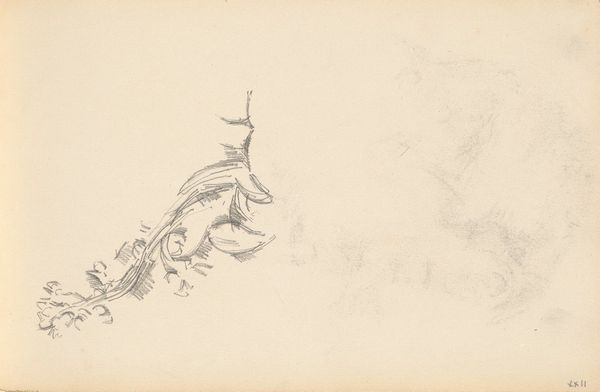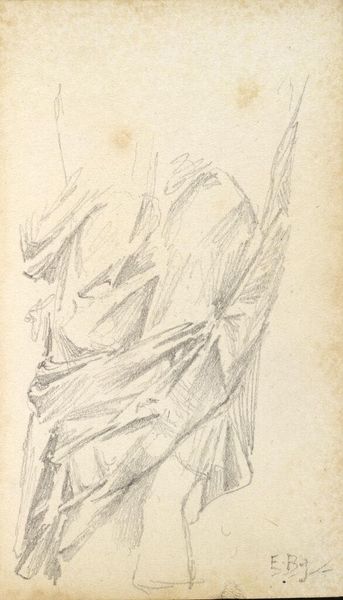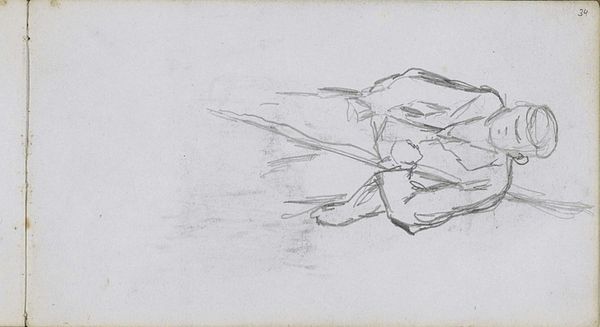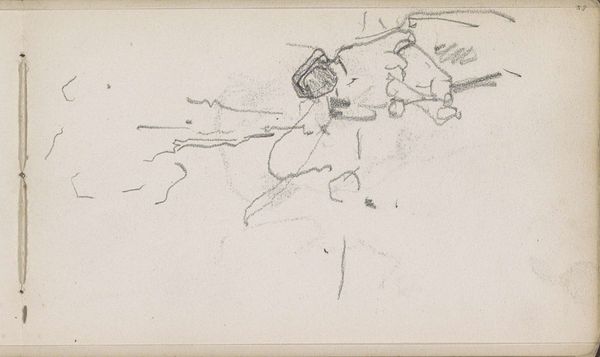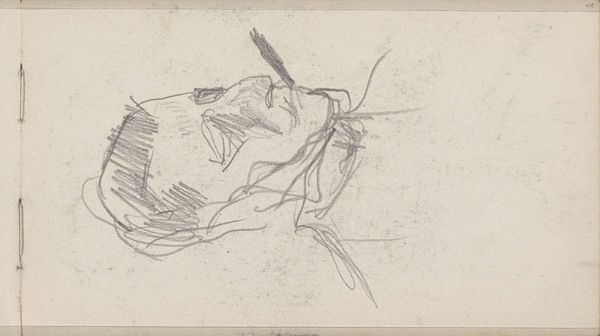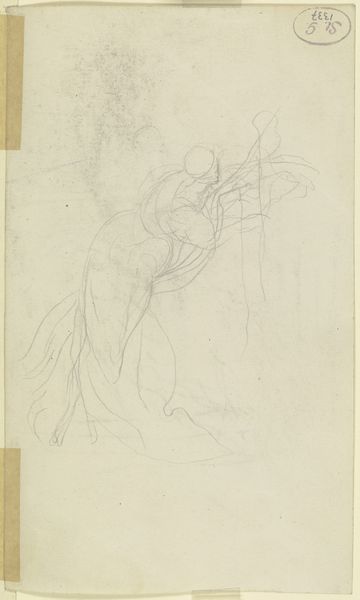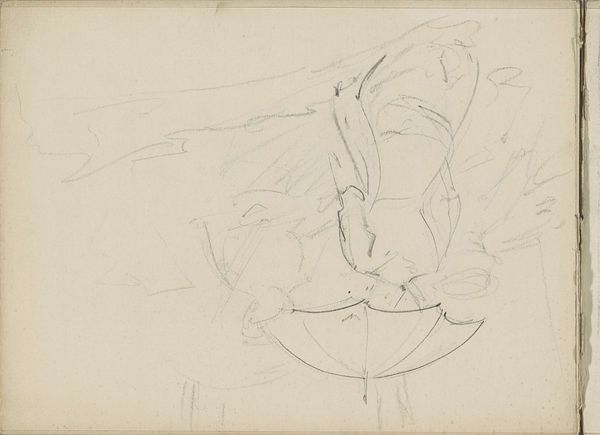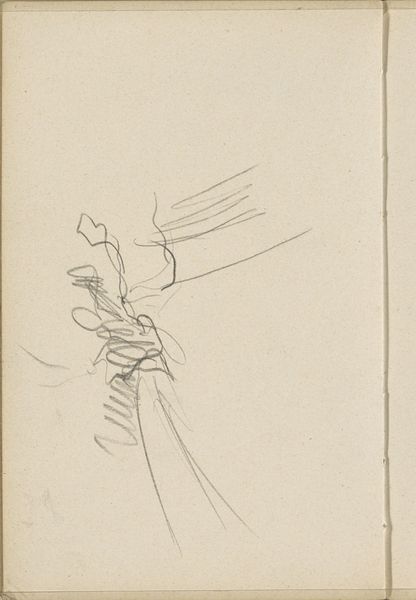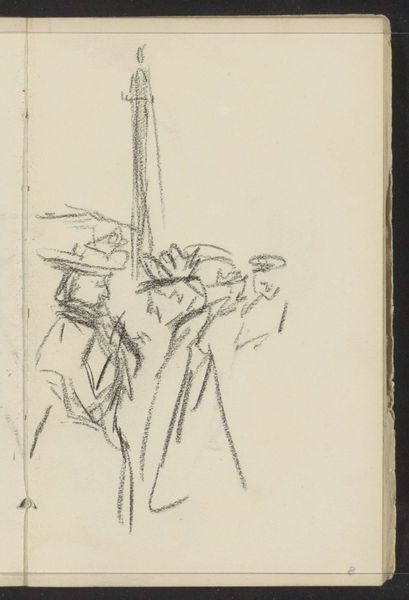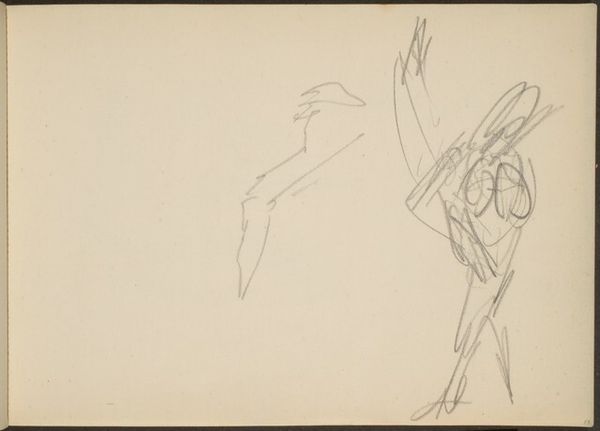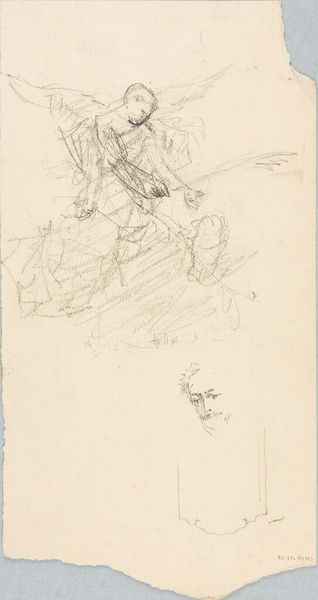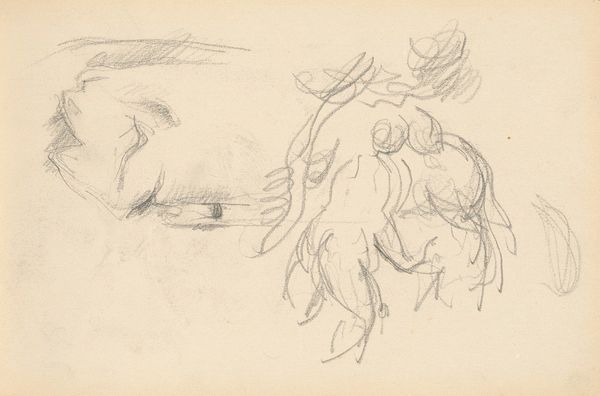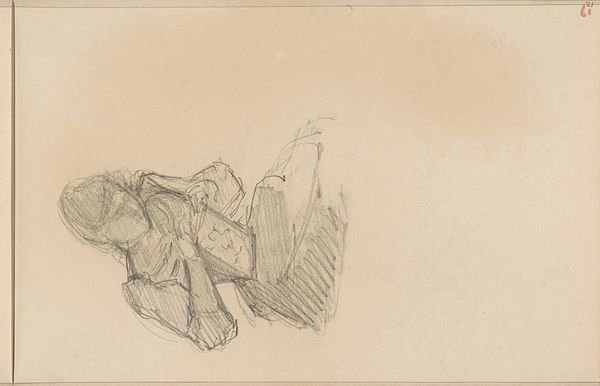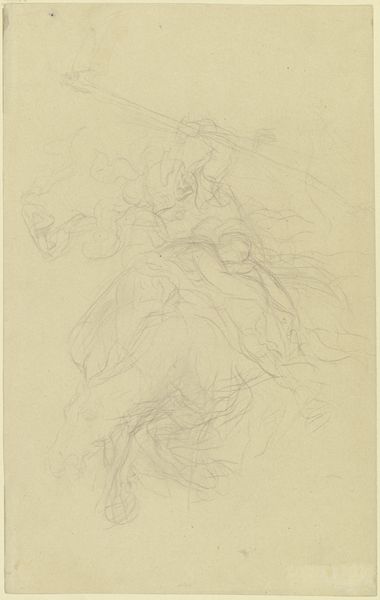
drawing, pencil
#
drawing
#
pencil
#
abstraction
Copyright: Public Domain: Artvee
Editor: Here we have Cézanne’s pencil drawing, "Thistle," created between 1893 and 1896. There’s something unfinished about it, almost frantic, which I find quite intriguing. What can you tell me about this sketch? Curator: Considering the material properties, observe the pressure Cézanne applies. Notice how the density of the graphite varies, implying volume but also highlighting the physical act of mark-making. The thistle, as a subject, gains importance not just as an image, but as something worked, something extracted from the earth. Does the thistle as a symbol – prickly, common, a weed almost – complicate the high/low art divide for you? Editor: That’s interesting. I hadn’t really thought about it like that. So, it’s not just about *what* he’s drawing, but *how* he’s drawing and the social connotations of the subject itself? Curator: Precisely! And think about accessibility. Pencil was a common medium. How does that affect the consumption and perception of his art? It democratizes art, showing the labor and common materials in play. Editor: So, the ‘prestige’ of fine art gets challenged when we consider these everyday materials and subjects…It almost feels like he's elevating something humble, like manual labor, or deconstructing established artistic hierarchies by highlighting process. Curator: Exactly! How do you feel viewing it now? Does knowing more about his production methods make a difference? Editor: Absolutely. It encourages you to think about art's value and challenges traditional ideas of what is considered ‘art’ at all. Thank you. Curator: My pleasure. Hopefully, it will also inspire you to consider labor when interpreting other works.
Comments
No comments
Be the first to comment and join the conversation on the ultimate creative platform.
